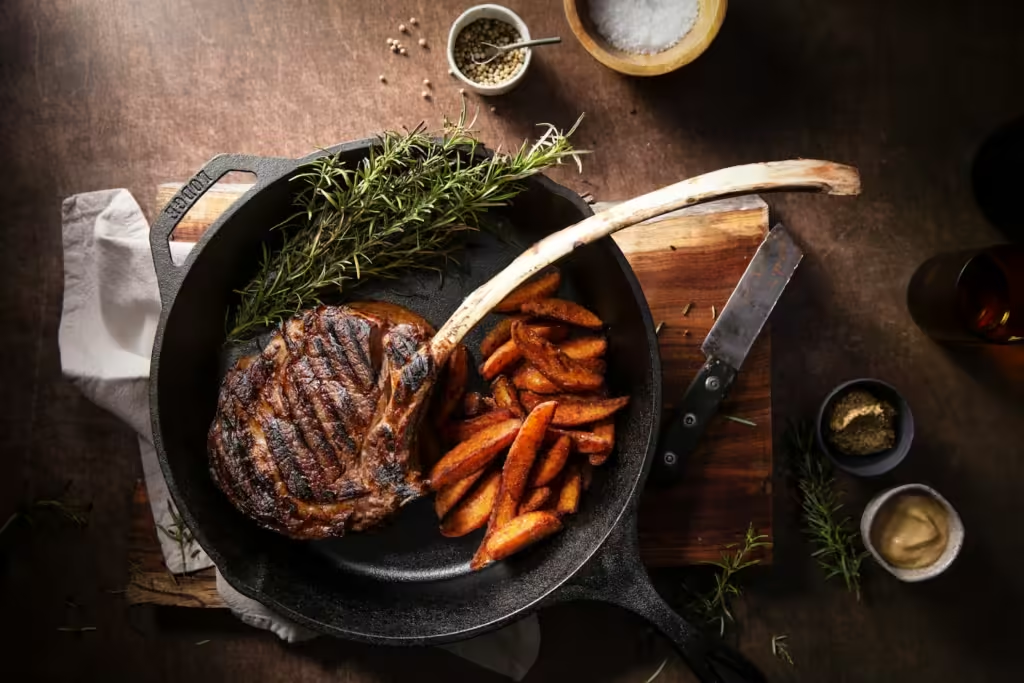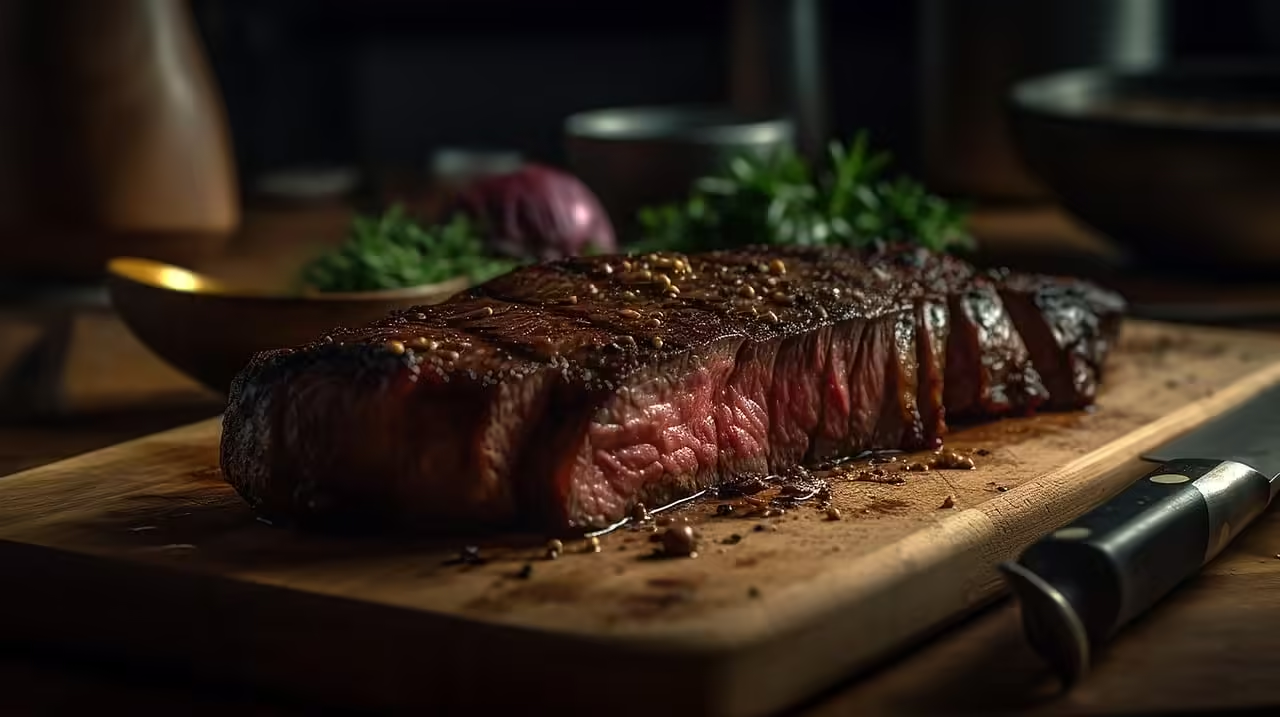Table of Contents
Searing a steak to perfection requires high heat because it results in a crispy, brown exterior and juicy, soft interior. But some cooks are reluctant to use a pan that is scorching hot, particularly if it tends to smoke up the kitchen. If this is a familiar situation to you, the likely culprit is not the high heat but rather the oil you use.
One of the most overlooked errors to avoid while cooking steak is using the incorrect kind of oil. It’s all related to the oil’s smoke point, or the temperature at which it starts to burn and smoke.
For example, extra virgin olive oil has a relatively low smoke point of 325 degrees Fahrenheit, so you might choose to use it in the kitchen. If you heat it to the necessary temperature of 375 degrees Fahrenheit, or even higher, to get a lovely crust on a steak, the meat will taste burnt and your kitchen will smell like smoke.
However, rice bran oil works great for grilling steak because it can be heated to 490 degrees Fahrenheit before it starts to burn. There may probably be some smoke coming from the pan even after this, but not enough to cause your smoke alarm to go off or to ruin the flavor of your food.
Selecting the appropriate oil not only facilitates the cooking process but, depending on the kind, can improve the meat’s flavor as well.
Which Are The Best Oil While Cooking Steak

For steak, any high-heat oil that’s ideal for sautéing will do. Look for one that can endure temperatures of 400 degrees Fahrenheit or higher. The smoke point of vegetable oil is approximately 450 degrees Fahrenheit, and the smoke points of corn and sunflower oils are comparable. Safflower oil can be heated to an astonishing 510 degrees Fahrenheit before burning, so if you’re not afraid of high heat and want to cook your steak extremely hot for a rich crust on a rare interior, give it a try.
Light or refined olive oil works well for steaks instead of extra-virgin olive oil, which will smoke only at 465 degrees Fahrenheit. Additionally, butter is not the best option for cooking steak because of its low smoke point of only 350 degrees Fahrenheit, unless you clarify it first. Despite this, butter provides red meat a beautifully rich flavor. Butter can be cooked to 450 degrees Fahrenheit once it has been clarified, which removes the milk particles that burn easily.
Go to the butcher store and ask for beef tallow; it’s the key to restaurant-caliber steaks and side dishes if you want the most meaty flavor imaginable. Pure cattle fat with a high smoke point—roughly 400 degrees Fahrenheit—is called tallow.
It gives the meat—as well as potatoes or other vegetables you might choose to roast to go with it—a beautifully rich, savory, extra-beefy flavor.
To prevent further smoke, oil the steak rather than the pan.

The first step to a more reliable, stress-free steak experience is selecting the appropriate oil, but using the right amount is also important. Even though the steak has a high smoke point, if you use too little oil, it may stick to the skillet (although it shouldn’t if the temperature is hot enough), heat up a large pool of oil, and spit and smoke. This may not only put you at risk when cooking, but it may also cause the steak to get overly greasy.
Adding oil straight to the steak, as opposed to putting it in the pan, is the ideal method. Just brush the meat with a basting brush or your fingertips after drizzling it with your preferred oil on both sides. To coat the steak, just a small amount of oil is required: It should only take one or two tablespoons, depending on how big the cut is. You also avoid overheating the oil when you oil the meat rather than the pan. A few extra seconds can cause a splattering, smokey scenario.
Additionally, seasonings adhere more readily to the surface of the steak when it is oiled. Just before the steak reaches the hot pan, season both sides generously with salt. This will help the steak form a delicious crust that is well browned.
read also: It Does Matter Which Side of the Steak You Cook First.
The Oil Mistake Everyone Makes When Cooking Steak (msn.com)
Oil While Cooking Steak Oil While Cooking Steak Oil While Cooking Steak Oil While Cooking Steak Oil While Cooking Steak Oil While Cooking Steak


1 thought on “The Common Error in Oil While Cooking Steak”